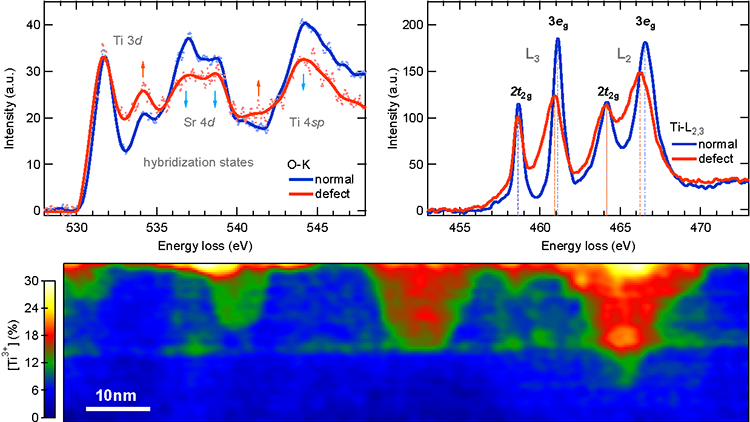Nanosized conducting filaments formed by atomic-scale defects in redox-based resistive switching memories
April 2017
by Hongchu Du, Chun-Lin Jia, Annemarie Koehl, Juri Barthel, Regina Dittmann, Rainer Waser and Joachim Mayer
Redox-based resistive switching phenomena are found in many metal oxides and hold great promise for applications in next-generation memories and neuromorphic computing systems. Resistive switching involves the formation and disruption of electrically conducting filaments through ion migration accompanied by local electrochemical redox reactions. These structural changes are often explained by point defects, but so far clear experimental evidence of such defects is missing.

Here, nanosized conducting filaments in Fe-doped SrTiO3 thin-film memories are visualised, for the first time, by scanning transmission electron microscopy and core-loss spectroscopy. Conducting filaments are identified by a high local concentration of trivalent titanium ions correlating to oxygen vacancies. Strontium vacancies and lattice distortions also exist in the filaments.
Despite a high concentration of defects in the filaments, their general SrTiO3 perovskite structure is essentially preserved. First insights into the switching mechanism are deduced from a snapshot simultaneously showing multiple nanosized filaments in different evolutionary stages. The coexistence of a high Ti3+ concentration along with Sr- and O-vacancies in the conducting filaments provides atomic scale explanations for the resistive switching mechanisms. The results shed unique light on the complexity of the conducting filament formation that cation and anion defects need to be considered jointly.
Further reading:
Hongchu Du, Chun-Lin Jia, Annemarie Koehl, Juri Barthel, Regina Dittmann, Rainer Waser and Joachim Mayer: Nanosized conducting filaments formed by atomic-scale defects in redox-based resistive switching memories,
Chem. Mater. 29 (2017) 3164–3173
